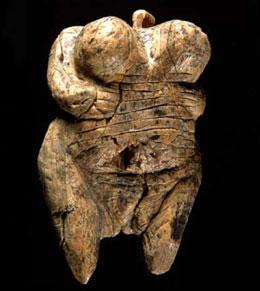One of the rather charming experiences of going through old writing about science is reading the confident, informed, progressive knowledge of the rightness of the latest science, how it overturns the ancient superstition or absurdly wrong beliefs of earlier times and that the present day now knows the truth. Sometimes the writer invites the audience to smile over the naivety of what used to be believed. Only, sometimes, that declaration of confidence turned out to be too quickly made. Of course, today, scientists and, even more so, the non-scientific writers of science journalism know better. They never would make that kind of mistake.
I came across Jeffrey Sallit's "Recursivity" blog while researching a quote that interested me. He is a professor in the Computer Science department of The University of Waterloo, listed online as a mathematician. I posted a comment on one of his recent diatribes against his colleagues talking about religion, which led to a discussion of two topics in the social "sciences". I will write about the second one as part of the series I'm working on but the first one is so easily discussed that it hardly needs research. I've previously written on both.
I'll begin by pointing out that three days into the dispute Shallit hasn't produced arguments but has depended on reciting names, Hamilton, Haldane, Maynard-Smith, not what they claimed but merely a litany of their names. Those experienced with atheist debating tactics will know this is the infamous "argument from authority" which atheists so often hold is a logical fallacy which religious people are addicted to. Shallit has not quoted any of his cited authorities to refute my points, nor do I believe on the basis of having read some of them he could. If he can he has had three days of my pointing out his failure to back up what he was saying to do it
And, also familiar to anyone who has disputed much with online atheists, his other weapon is mockery, repeated assertions of crackpottery. Something that atheists are always whining about, "ad hominem". I'm sure that's his appeal to the prejudice of his usual atheist audience, which is the entire purpose of that debating tactic.
If Shallit can do any better would seem to be a fading prospect as he's still carrying on the way he has for three days running. We will see.
-----------------
The easy part of it is my point about that famous 35,000 year old statue that was much in the news about three and a half years ago. The one which was uniformly held by the "experts" to be typical of men's sexually ideal woman, a way back in them thar days.
At the time it was announced and, by virtue of the sex angle, all over the news, I read a lot of accounts, including the one linked to above, and noted that the "experts" were making an awful lot of baseless assumptions about why it was made, who made it and what it represented to those folks, who all died more than thirty thousand years ago, leaving no written record of what they or the artist thought of the thing.
Most telling of all was that none of the "experts" I'd seen quoted ever considered that the artist might have been a woman. That it might be a self-portrait or a portrait of the artist's mother. As their speculation cut out what was likely the thinking of, presumably, half of the population, the belief that their proposed ideal was "typical" of the time, is kind of deficient as science, not to mention mathematics. Perhaps the artist was a lesbian.
They all seemed to think that it would have been typical of the ideal of women in the presumed society its imagined artist is presumed to have been a typical member of when there is no other known representation from any presumed "culture" of that period. The next available one in time being made thousands of years after this one. How a sample of exactly one example can allow them to know that is one of those mysteries of the divination so casually practiced in the social and behavioral "sciences".
For all we know the figure was the creation of a pre-historic chubby chaser who imagined women fatter than he'd ever seen, or, maybe, it was an object of ridicule on account of its absurd proportions. I'd wonder if the teensy-little head might be an indication of that being the case but I'd never call my guess work "scientific". Maybe it was a satirical protest against a leaner though overly ample "ideal" or maybe it was a protest that fat is beautiful too.
We have no way of knowing how the artist saw their work, why they made it, how well it matched their intentions. We don't know if more than one person worked it or if people as distant from each other as hundreds of years apart might have had a hand in it. We don't know if they threw it away because it was a failed project or if it was an object of reverent veneration or masturbation.
In short, other than its physical description and a rough estimate of its age and that it was almost certainly meant to represent a female human being, nothing whatsoever is known about it. None of the speculations on anything else can possibly be science because there is no way of knowing if what is asserted is a spot on identification of its significance to the artist and others in their society who saw it or if it tells us entirely more about the anthropologists and others who are going on about it today in such a sciency manner.
Physical description, yes, that can be science, storytelling about it, no, that can't be.

No comments:
Post a Comment